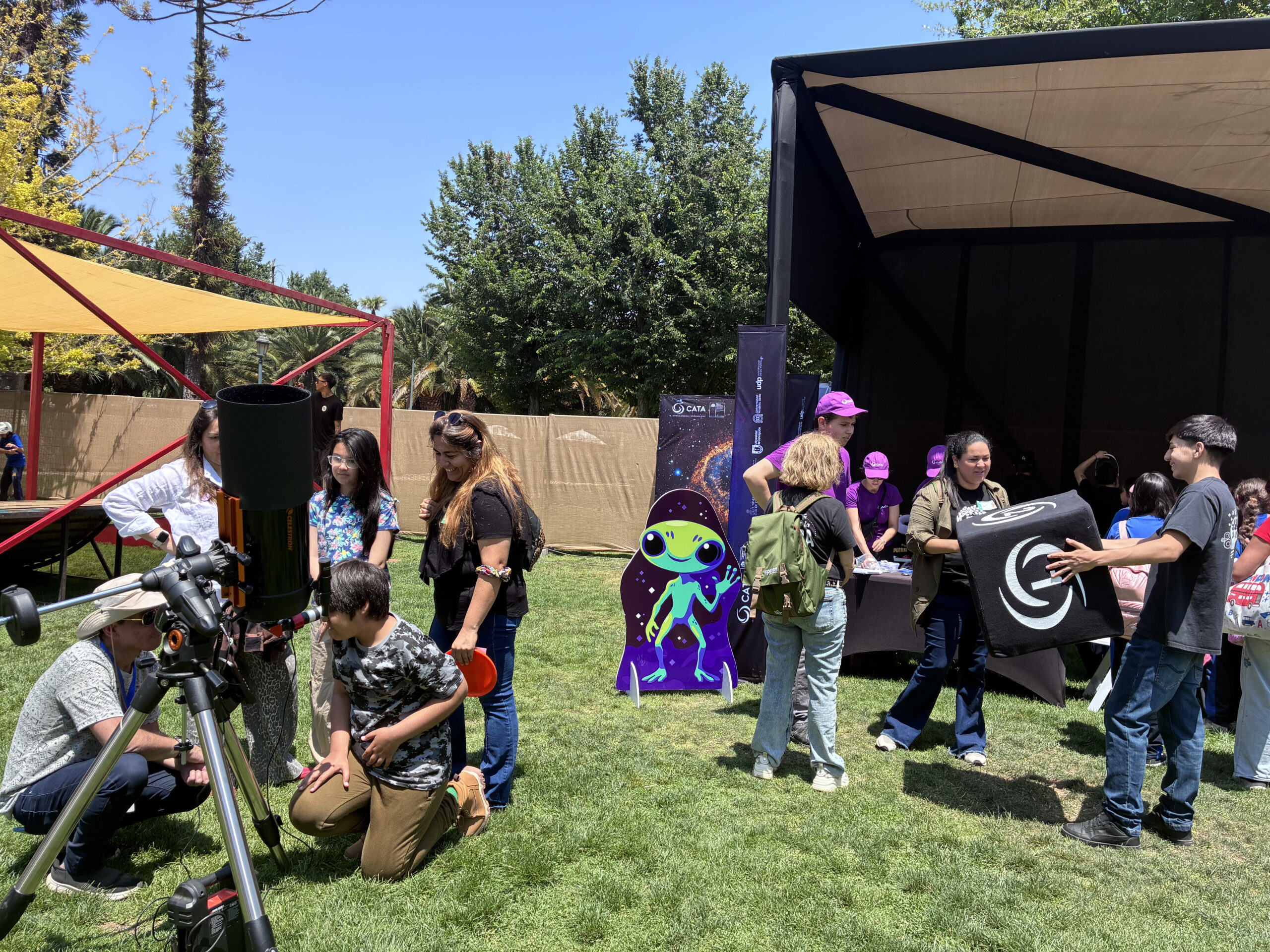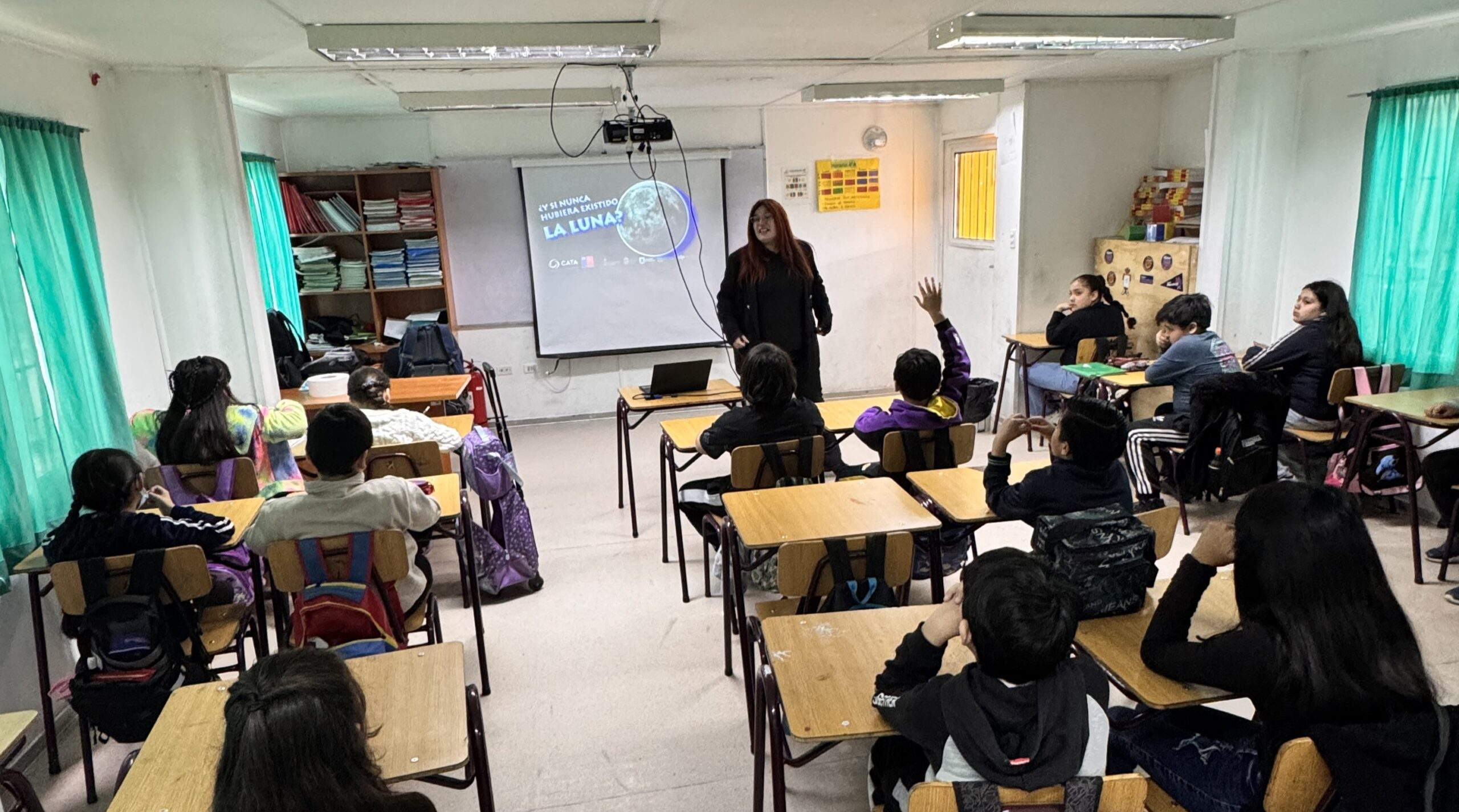
“Our skies are an inexhaustible source of creativity and wonder that can lead us to create new technologies”
The general manager of the Center for Astrophysics and Related Technologies (CATA), Elise Servajean, participated in Congreso Futuro, where she discussed CATA's role in technology transfer, the path taken by Chilean astronomy and its key link to society, together with the current challenges in the generation of scientific knowledge.
The Center for Astrophysics and Related Technologies (CATA) was present in a new version of the Congreso Futuro, the most important event of knowledge and scientific dissemination in Latin America. During the third day, Elise Servajean, general manager of our Center, gave her presentation “Chilean innovation from the skies”, in which she described the work and progress of our institution in the areas of astronomical instrumentation and technology transfer.
D. in Astronomy highlighted the latter as one of the current strategic pillars of CATA, and how it has been developing thanks to the links with other institutions. “One of our objectives is to be highly competitive in the production of scientific knowledge in astronomy and astrophysics, in order to advance and install our capabilities in the development of astronomical instrumentation worldwide. We are currently at the stage of transferring this knowledge and technology to other industries and having a positive impact on society,” she said.
One of these outstanding initiatives is the Gradian project, implemented thanks to the award of funds for the development of a technological project that proposes innovative solutions to the industry based on the use of applied technology, convened by Explora 2024 and carried out by the company Agrosuper and HubTec.
How was it applied? The manager explained that a technology was developed from a sensor based on optical spectroscopy, a crucial functionality in astronomical instrumentation and space exploration, which allows the study of visible light emitted or absorbed by different objects.
She also added that in its execution and development, concept tests and the creation of a prototype were carried out thanks to the joint work of CATA engineers and researchers at the Millimeter Wave Laboratory of the University of Chile led by the researcher associated with our Center, Ricardo Finger, and the validation of the solution in a food production plant of Agrosuper in Casablanca, achieving a degree of accuracy of 95%.
Astronomy as past, present and future
In addition to the Gradian project, Elise Servajean highlighted in her participation in Congreso Futuro many of the technological advances arising from astronomical research, where she also emphasized the proper use of resources and the importance of the growth of the astronomical community for the impact on innovative solutions in society. Among these tools that are nowadays present in our daily lives, he mentioned Wi-Fi technology, the Global Positioning System (GPS), magnetic resonance imaging and digital cameras.
In parallel, the astronomer also revealed other outstanding initiatives that are being developed in CATA’s laboratories together with the engineers and students associated with our Center. Among them, the remote identification of cell phones, especially for cases of lost persons or natural disasters; and red tide detection. These projects are still under development, but could mean important advances in innovative solutions for people and industries. In this line, the general manager explained the relevance of astronomical research, the growth of the community and the training of future scientists and astronomers in Chile to further develop the national positioning in technology transfer.
“We are the world capital of astronomy and we have a highly trained astronomical community in scientific development. It is there where technology transfer appears as a solution and promotion in the continuous training of the community through doctorates in science, since knowledge takes a role as an engine for the development of innovative solutions both in industry and in the State. As CATA we are oriented to solutions that can be quickly implemented, but also in the development of medium and long term technologies, opening a field for more people to dedicate time of their knowledge to look for solutions that can be developed”, concluded Servajean.
Finally, at the conclusion of her presentation, the astronomer highlighted our country’s role as the astronomical capital of the world and called for the care of the Chilean skies in order to continue with the advances in technological innovation.
“Our skies are an inexhaustible source of creativity and amazement that can guide us to create new technologies that are from Chile to the world. To generate impact in everyone’s life and to continue being the astronomical capital of the world, not only because of the publications and telescopes, but also because we are capable of taking full advantage of what they can give us”, concluded Elise in her presentation at Congreso Futuro.
Recent news
-
 Publicado el: 05/12/2025CATA launches Applied Research Fund 2026
Publicado el: 05/12/2025CATA launches Applied Research Fund 2026 -
 Publicado el: 01/12/2025The astronomical experience was part of the 4th Ladera Sur Festival.
Publicado el: 01/12/2025The astronomical experience was part of the 4th Ladera Sur Festival. -
 Publicado el: 25/11/2025Students from Angol held an astronomy workshop with CATA
Publicado el: 25/11/2025Students from Angol held an astronomy workshop with CATA -
 Publicado el: 15/11/2025Leonids meteor shower 2025: What are they, when will they be visible from Chile, and what can we learn from them?
Publicado el: 15/11/2025Leonids meteor shower 2025: What are they, when will they be visible from Chile, and what can we learn from them? -
 Publicado el: 13/11/2025CATA researcher strengthens international ties during visit to the Center for Astrobiology in Madrid
Publicado el: 13/11/2025CATA researcher strengthens international ties during visit to the Center for Astrobiology in Madrid
Categories list
- Acknowledgments 21
- Astrobiology 6
- AstroCluster 1
- Black holes 18
- Corporativo 57
- Cosmology 5
- Descubrimientos 22
- Disclosure 73
- Exoplanets 13
- Extension 6
- Galaxies 21
- Galaxies formation 5
- Inter y Transdisciplina 4
- Local Universe 16
- Publications 6
- Sin categorizar 34
- Solar System 21
- Stellar formation 8
- Technology 15
- Technology Transfer 17







